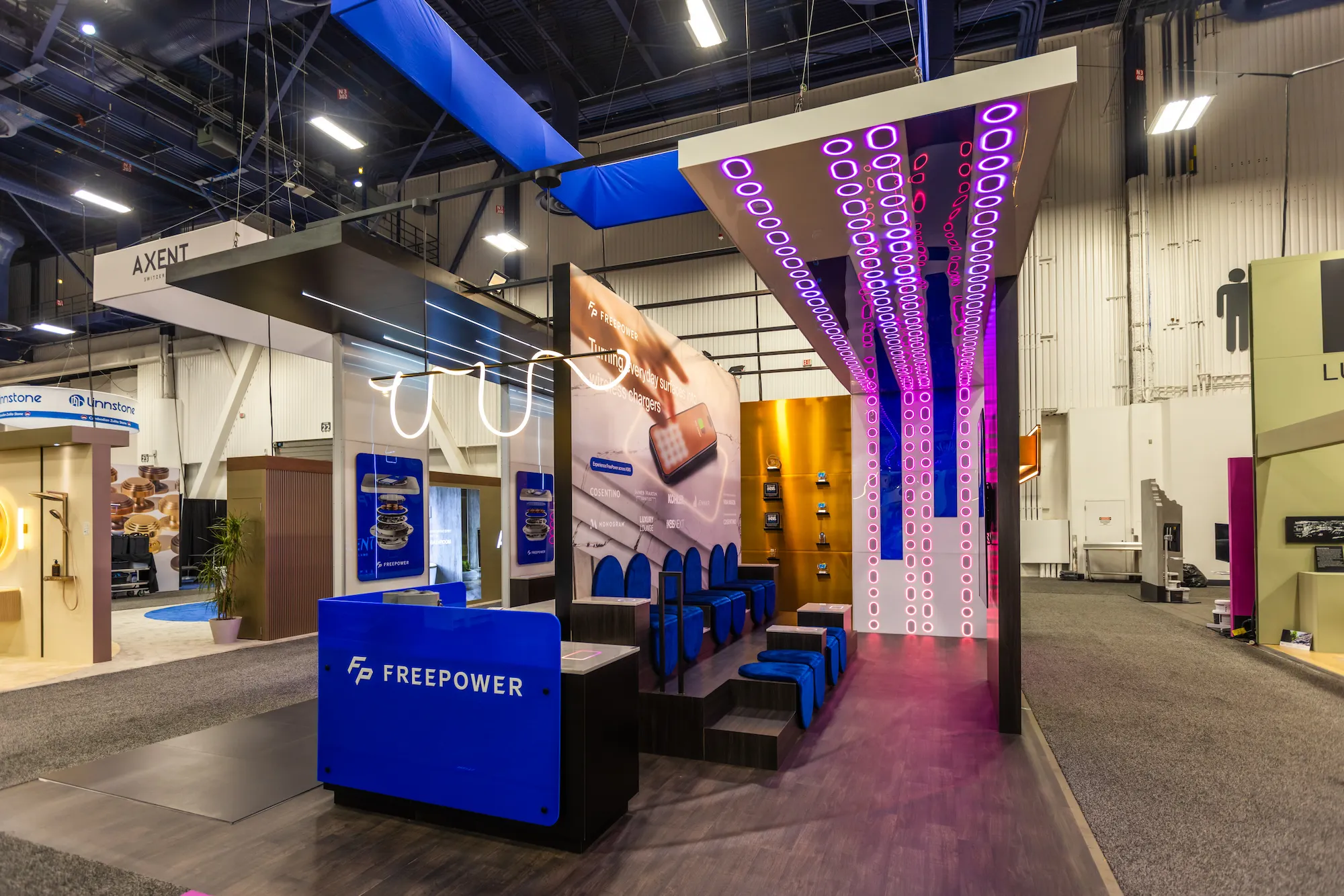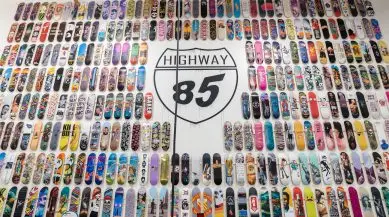CES isn’t just a trade show; it’s the global stage where tech titans and scrappy startups alike vie for the world’s attention.
The spotlight is blinding, the competition is fierce, and the audience is the most discerning on the planet.
To stand out here, you don’t just need a booth. You need an experience.
You need a magnet for feet, cameras, and deals.
But what does it take to transform an empty patch of convention center concrete into a badass brand beacon? It’s a marathon of creativity, logistics, and sheer will. Here’s a peek behind the curtain at the four-month journey of building a CES booth that doesn’t just get seen, it gets remembered.
Month 1: The Blueprint – Strategy & Conceptualization (The “Why”)
The first month is all about brains, not brawn. Before a single sketch is drawn, we ask the fundamental questions:
- What is our core objective? Is it to generate leads, launch a specific product, attract investor interest, or simply build brand awareness? The answer dictates every decision that follows.
- Who is our target audience? Are we speaking to hardcore tech bloggers, retail buyers, potential B2B partners, or consumers? The messaging and interactive elements must be tailored to them.
- What is our story? CES is a sensory overload. A clear, compelling narrative is the hook that reels people in. We distill our brand’s essence into a single, powerful idea that the booth will bring to life.
This phase concludes with a creative brief and initial mood boards. It’s about building a rock-solid strategic foundation. The “badass” factor isn’t just about being cool; it’s about being cool with a purpose.
Month 2: The Design – Creativity Meets Reality (The “What”)
With strategy locked in, the creative team takes the wheel. This is where the vision starts to take tangible form.
- Architectural Layout: How will foot traffic flow? Where will demos be stationed to avoid bottlenecks? How do we create intimate conversation areas without sacrificing open, inviting sightlines? We model everything in 3D, obsessing over the attendee’s journey from five feet away to five inches from our product.
- The “Wow” Factor: This is the secret sauce. Is it a larger-than-life, Instagram-ready installation? A breathtaking immersive LED tunnel? An incredibly hands-on, interactive demo that lets people feel the technology? We brainstorm ideas that are ownable, on-brand, and genuinely engaging—not just gimmicks.
- Material World: Here, creativity collides with practicality. We select materials that look stunning under harsh show lights but are also durable, lightweight (for shipping), and, crucially, fire-retardant to meet strict Vegas convention center codes. Every surface, texture, and color is chosen with intention.
By the end of Month 2, we have a full set of architectural drawings, 3D renderings, and a detailed list of every material, screen, and lightbulb required.
Month 3: The Grind – Fabrication & Logistics (The “How”)
If Month 2 is the dream, Month 3 is the reality check. This is the unsexy, critical grind of project management.
- Fabrication Begins: Our approved designs go to the shop. CNC machines whir, sawdust flies, and welders spark as our booth’s components begin to take physical shape. Regular check-ins and quality control are essential to ensure everything is being built to spec.
- The Logistics Labyrinth: This is arguably the most complex part. We’re dealing with:
- Shipping: Coordinating with freight companies to get our booth from the fabrication warehouse to Las Vegas, navigating strict CES union rules for installation and dismantle (I&D).
- Paperwork: Submitting detailed floor plans, electrical plots, and plumbing plans to the CES organizers and the convention center for approval. Miss a deadline here, and your booth doesn’t get power.
- The Million Details: Ordering carpet, scheduling union labor for setup, arranging for WiFi, organizing shipping for products and demo units, and booking travel for the staff. It’s a symphony of spreadsheets, emails, and checklists.
One missed detail can cause catastrophic delays and costs. Meticulous organization is what separates a smooth setup from a nightmare.
Month 4: Showtime – Installation & Execution (The “Win”)
The final month is a sprint divided into two acts.
- Act I: Installation (The 48-Hour Miracle): The convention hall is a chaotic ballet of forklifts and scissor lifts. Our team (and the crucial union labor) works against the clock to assemble the puzzle pieces that arrived on the truck. Every light is focused, every screen is calibrated, and every surface is polished to perfection. It’s stressful, exhausting, and incredibly rewarding to see the renderings become a physical reality.
- Act II: The Show: The doors open. The lights blaze. The crowd pours in. This is why we did it. Now, the booth is no longer a structure; it’s a stage. The energy of the staff, the smoothness of the demos, and the reactions of the attendees are the final metrics of success. We’re not just manning a booth; we’re performing, connecting, and turning that four months of effort into tangible momentum.
The Aftermath: When the lights dim on the Las Vegas Strip, the journey isn’t quite over. The booth must be dismantled, packed, and shipped back. But more importantly, we debrief. What worked? What didn’t? What was the ROI? The lessons learned here become the blueprint for next year’s even badass-er booth.
Creating a standout presence at CES is a monumental task. It’s a four-month pressure cooker of strategy, creativity, and flawless execution. But when you see a crowd gathered around your creation, when you feel the buzz, and when you close that first major deal on the show floor, every late night and painstaking detail becomes worth it.
You didn’t just build a booth; you built a destination.
Schedule a Discovery Call to start the CES conversation.





